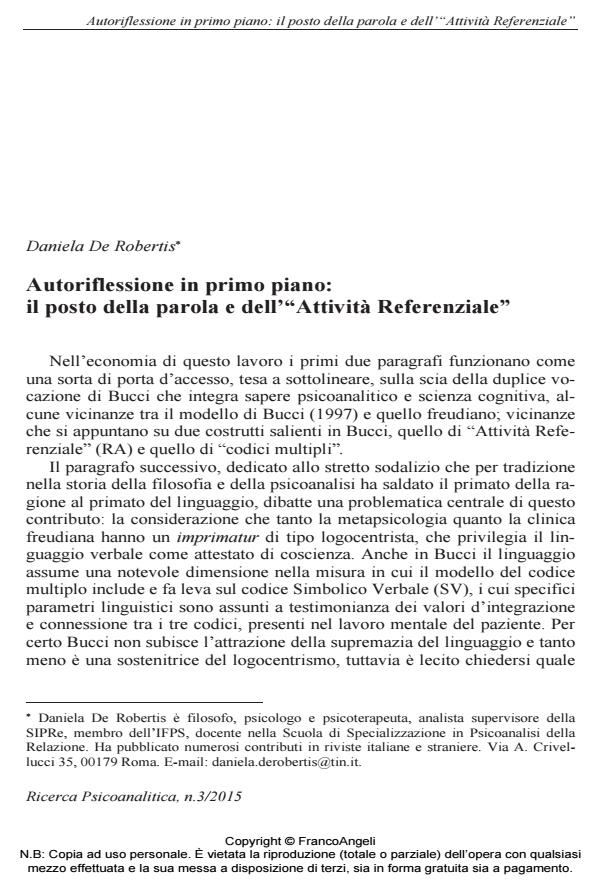Self-reflection in the foreground: the location of words and of "refrential activity".
Journal title RICERCA PSICOANALITICA
Author/s Daniela De Robertis
Publishing Year 2015 Issue 2015/3
Language Italian Pages 19 P. 85-103 File size 90 KB
DOI 10.3280/RPR2015-003007
DOI is like a bar code for intellectual property: to have more infomation
click here
Below, you can see the article first page
If you want to buy this article in PDF format, you can do it, following the instructions to buy download credits

FrancoAngeli is member of Publishers International Linking Association, Inc (PILA), a not-for-profit association which run the CrossRef service enabling links to and from online scholarly content.
The first part of this article highlights some elements of confluence between Freud and Bucci that can be identified as the concept of Referential Activity and the presence of multiple codes. Analysis then moves to the role of language in Freud and in Bucci, and the relation language builds with self-reflection. To close the author suggests an interpretation that joins cognitive science and psychoanalysis, giving value to Referential Activity and considering it the "operating arm" of self-reflection.
Keywords: Self-reflection, Referential Activity, language, logocentrism, connectionism, modularism
Daniela De Robertis, Autoriflessione in primo piano: il posto della parola e dell’"Attività Referenziale" in "RICERCA PSICOANALITICA" 3/2015, pp 85-103, DOI: 10.3280/RPR2015-003007